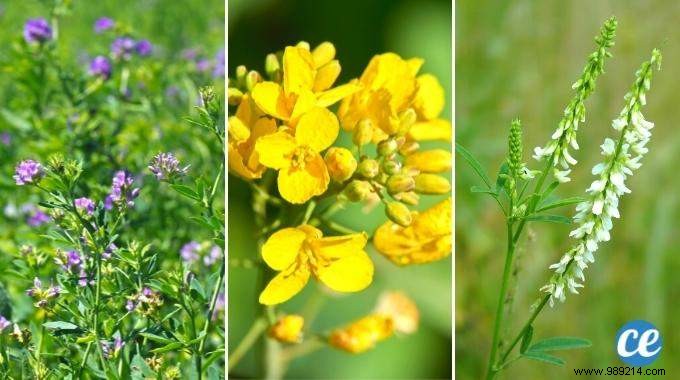
Today I reveal 6 green manures for the garden.
They are plants to be sown before spring.
They help protect the soil from bad weather and erosion.
But that's not all!
These plants aerate the soil, enrich the soil with nitrogen and nourish it as they decompose.
They promote the development of life and make the soil more fertile.
Much better than using chemical fertilizers. Isn't it?
Here is the list of 6 easy-to-grow plants that will boost the fertility of your vegetable garden . Watch:
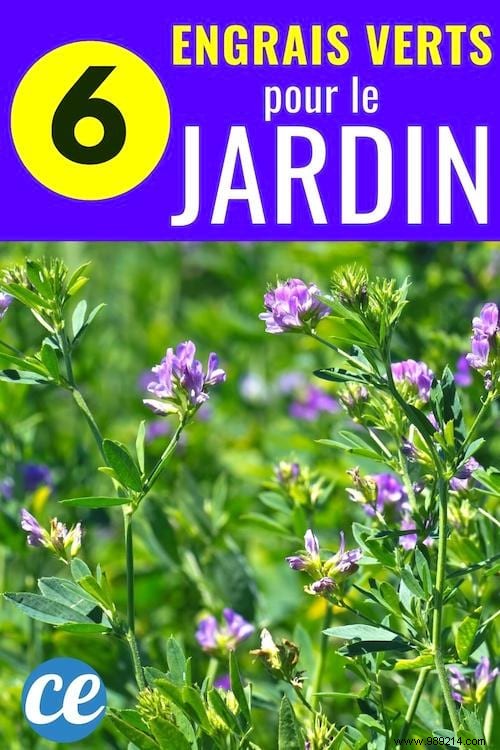
It is a plant that is grown specifically for its fertilizing properties.
It's natural and it avoids the use of chemical fertilizers.
In short, we do not necessarily plant this plant to harvest it, but above all to take advantage of the positive influence it has on the soil.

It is one of the best known plants by farmers.
Alfalfa looks like clover and has a very long root system. It allows the soil to be aerated and worked.
Sow it between March and September (250 g / 100 m2), on land that you will not be farming in the next 3 months.
Alfalfa is heat resistant and likes fairly dry land . It hates wet and heavy ground.
As soon as the alfalfa comes up, cut it down before the seeds ripen, as it quickly becomes invasive.
But take the time to appreciate its pretty blue-purple flowers!
You do not know what to do with your alfalfa once cut?
Get in touch with a horse or cattle breeder who will be happy to take it from you.
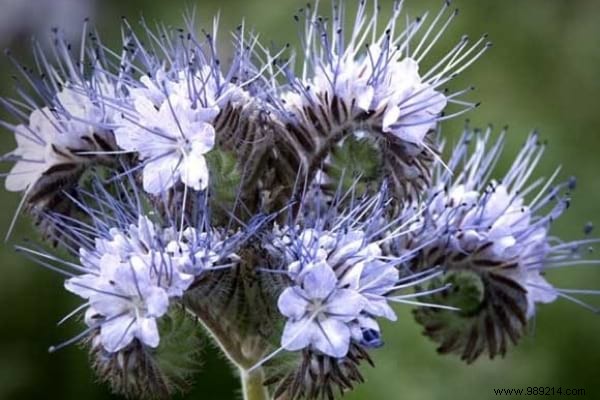
The phalecia, with its pretty purple flowers, has long roots that work the soil.
Very fast growing, its flowers attract pollinating insects:it is therefore appreciated by gardeners .
Sow it from April until the end of August (100 g / 100 m2), on fallow land.
Let the flowers mature and mow the plant.
Leave the plant in the ground during the winter months, it will come out on sunny days without suffering from frost.
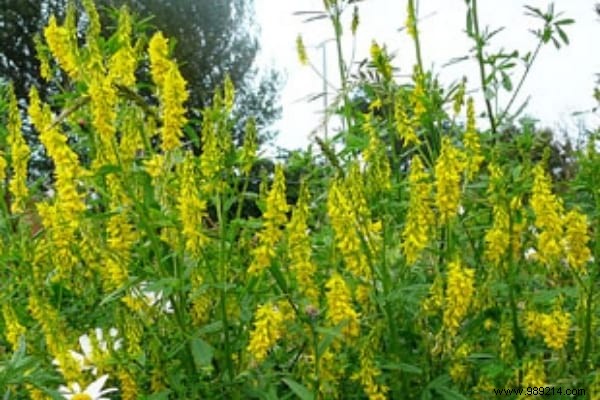
Sweet clover has long stems with white or yellow flowers.
As its name suggests, it is very melliferous , it is also called "honey lotus".
It develops quickly and enriches the soil thanks to the nitrogen released, which is why it is used in organic crop rotations.
Sow it in winter or spring (200 g / 100 m2), alone or with another grass.
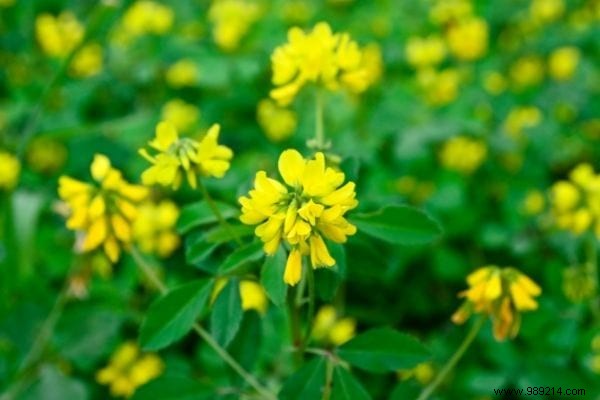
It looks like alfalfa, but blooms yellow and was already used as fodder by the Latins.
It loves dry, poor calcareous soils in hot regions, which it enriches with nitrogen.
Hating the cold, we will not be able to grow it everywhere.
Like alfalfa, grow fenugreek over a 3 month period before mowing.
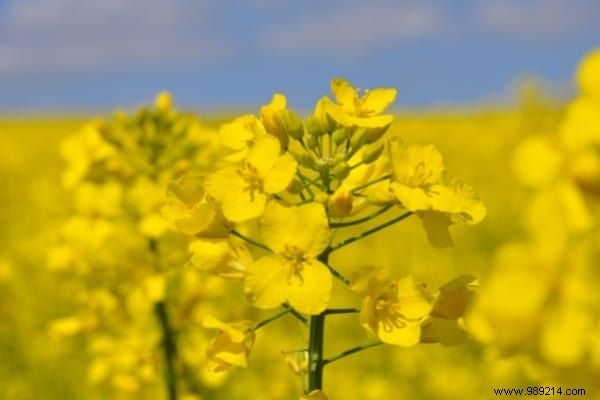
Fodder rapeseed is used in organic farming to renew grasslands or as an intermediate crop.
That is, to cover the ground between two classic crops.
This prevents the soil from being washed away by the rains , thus losing their nitrogen content.
Have its long roots, it works the soil.
The green parts, once cut and withered, also enrich the soil.
Plant it between March and August (150 g/ 100 m2) for a harvest 120 days later
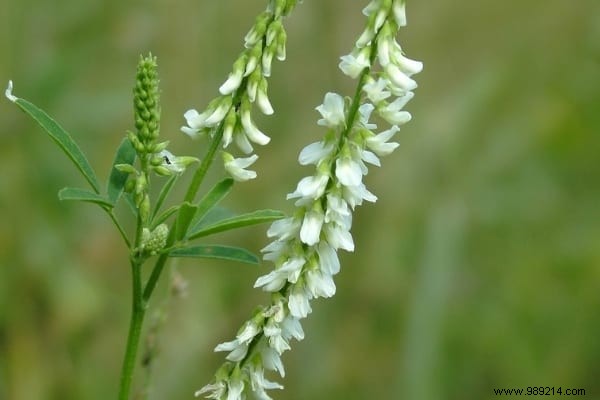
The shuttle resembles rapeseed, it is also its ancestor.
It is a covering fodder plant already cultivated in France from the 18th century.
The rape is not capricious and resistant to drought well, so it can be grown easily even in the south .
It is a well-known green manure that enriches the soil with nitrogen and prevents it from being washed away by the rains.
Plant it in summer (100 g / 100 m2) for a harvest 30 to 40 days later.
It is the fastest of the plants destined for the natural enrichment of the earth.
Bonus:Sunflower
It is often forgotten in the list of green manures. However, the sunflower has the same properties as the plants above.
It can be planted between mid-March and mid-April and mowed at the end of summer.
Our ancestors had it all figured out:they never left the land uncultivated to avoid soil and nutrient erosion.
To do this, they planted ground cover fodder plants. Thus, they could feed their animals without impoverishing the land. Even better:they improved it.
Here are the principles to follow:
- The earth must not remain bare. Bad weather (wind, rain, sun) washes the soil and impoverishes it. Hence the interest of using green manure plants.
- Alternate green manures with long roots to work the soil in depth, and with nitrogen rejection to enrich it.
- In the fall, late winter or early spring, sow your seeds simply after scratching the ground.
- Let the plants grow.
- Mow the plants before they produce seeds.
- Leave the plants to decompose in the ground for 3 or 4 days once you have cut them.
- Once the plants are dry, either chop them with a clipper and bury the remains about 10cm centimeters below the surface, or dispose of them with the help of a local breeder.
- If you have chickens or rabbits, they will also be happy to eat the extra leaves.
These "green manure" plants are effective on several levels.
Their roots drain the soil, protect it from erosion and prevent the formation of hard clods. In other words, they improve its structure.
They trap nitrates, preventing them from polluting groundwater.
But that's not all ! They make it possible to constitute a "pocket" of phosphorus, nitrogen and potassium which will be useful for the next plants.
Aerial parts , in addition to attracting pollinating insects, protect the soil from heat and drying out. Your land does not turn into an uncultivable desert area.
They prevent the establishment of unwanted weeds.